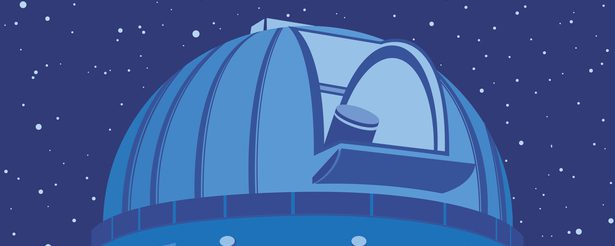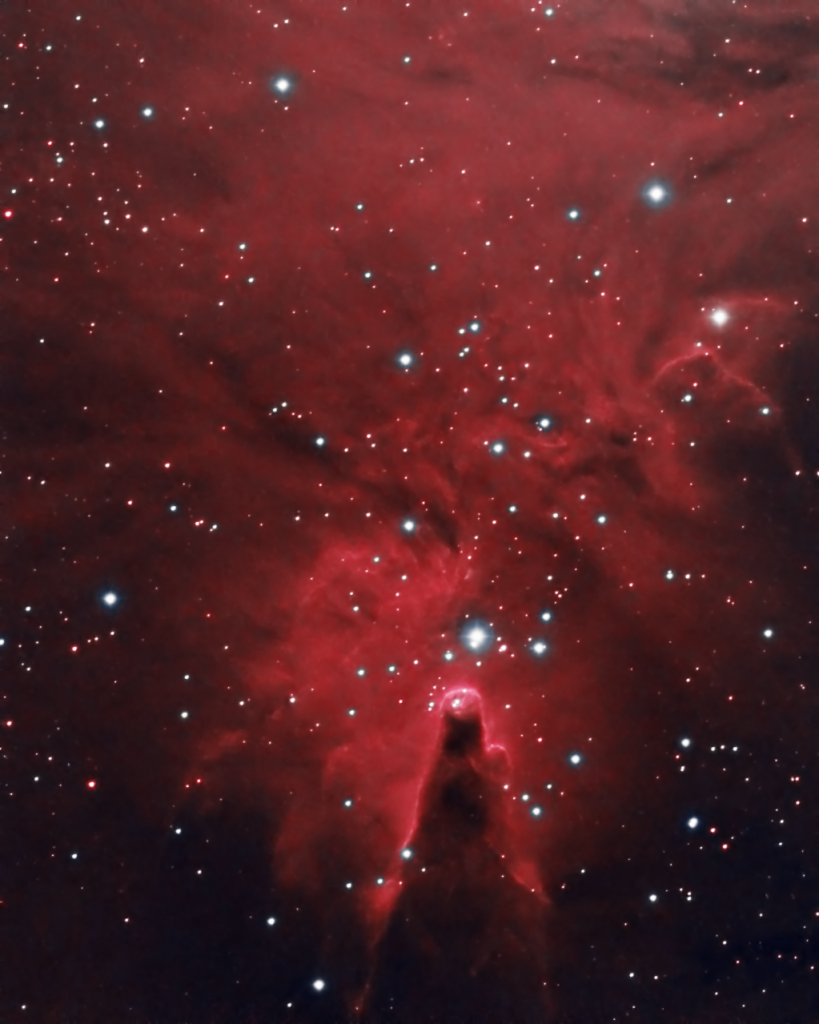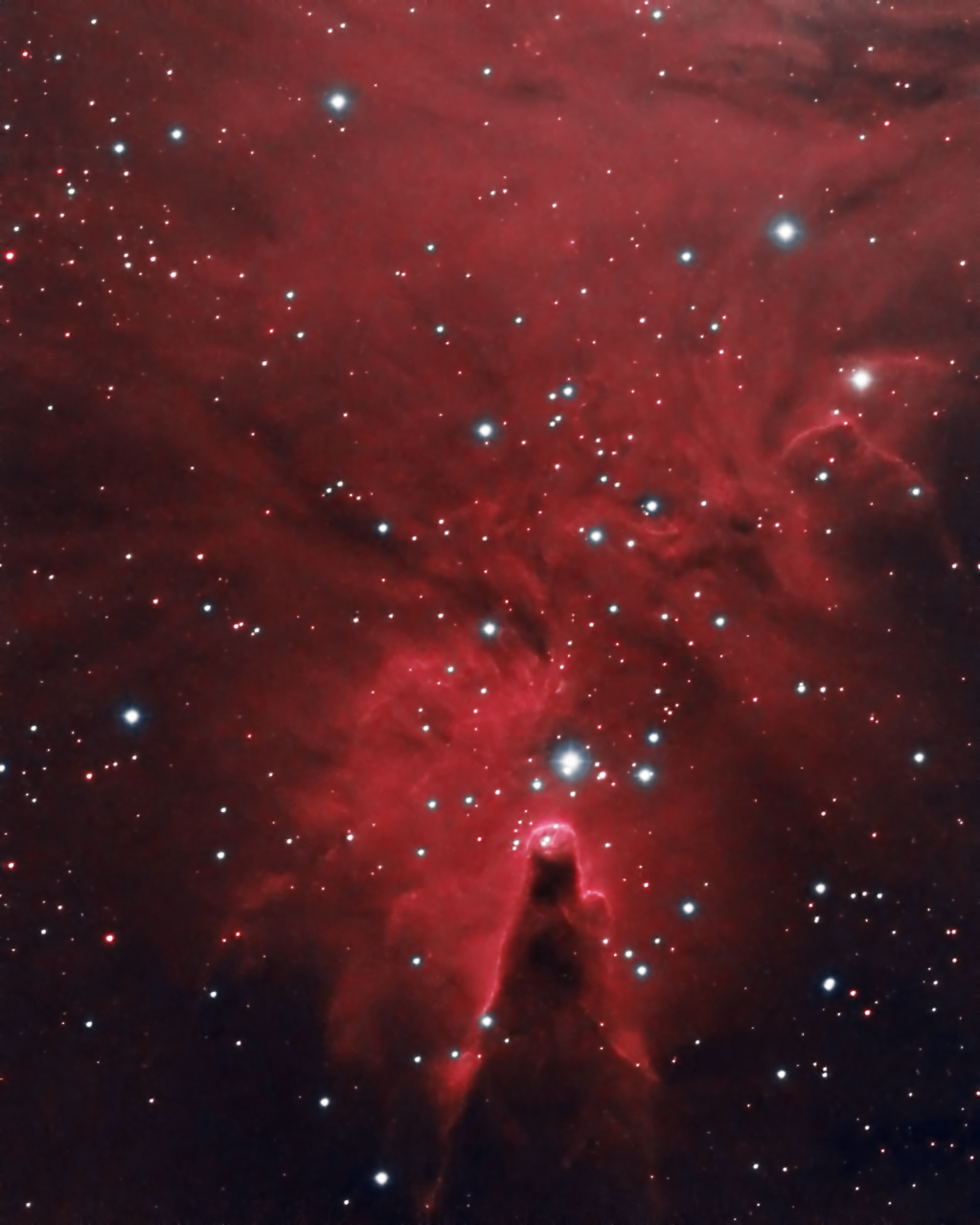
Similar Posts
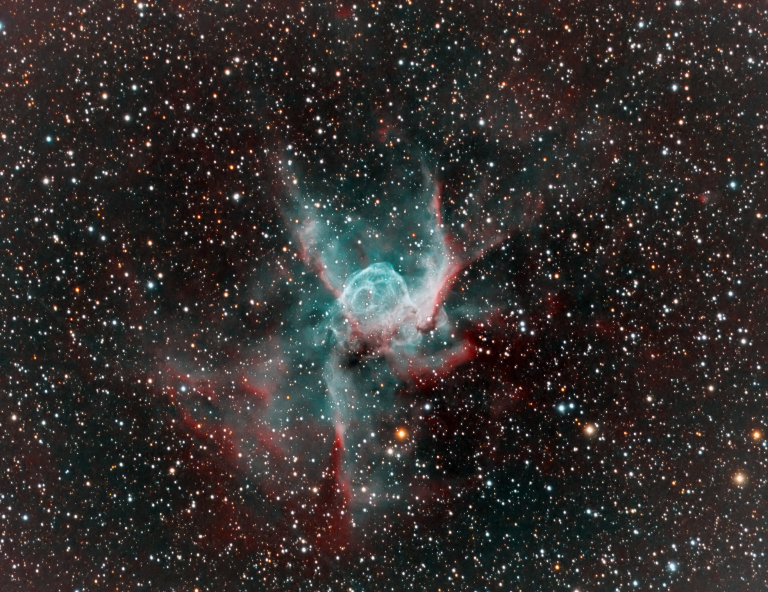
Thor’s Helmet
This week’s target was Thor’s Helmet (NGC 2359), an emission nebula in Canis Major a rather distant 12,000 light-years away. It’s formed by a Wolf-Rayet star in its center, which is a crazy-hot star whose immense stellar wind is bunching up and ionizing the gases around it in these complex patterns. It’ll probably go supernova…
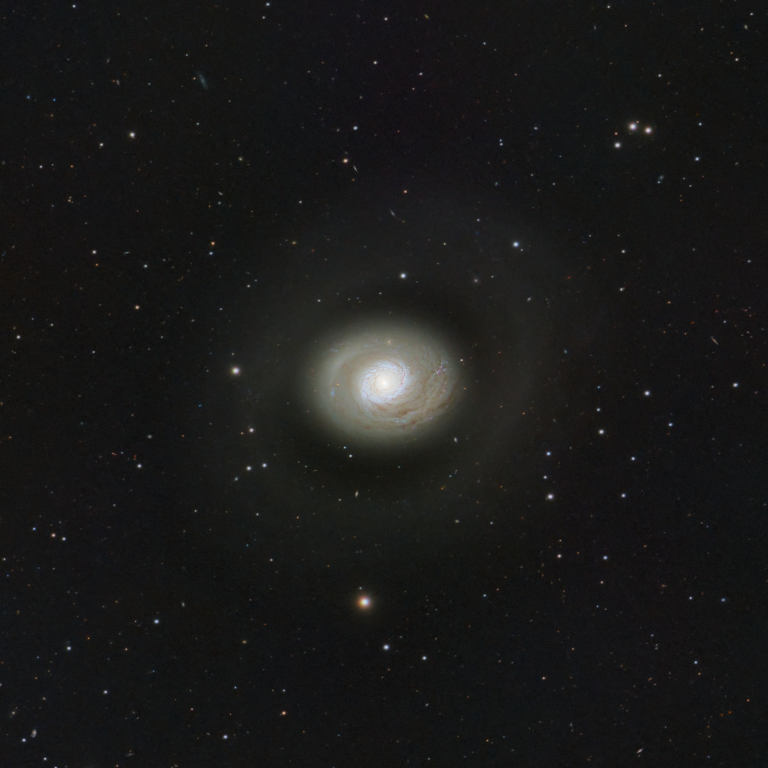
M94 / The “Cat’s Eye Galaxy”
Sometimes called the “Cat’s Eye Galaxy,” this is M94 – about 16 million light years away in the constellation Canes Venatici. You can barely see its faint outer ring surrounding it here, as well as several very distant background galaxies. It’s notable for challenging our understanding of the universe – it appears to have very…
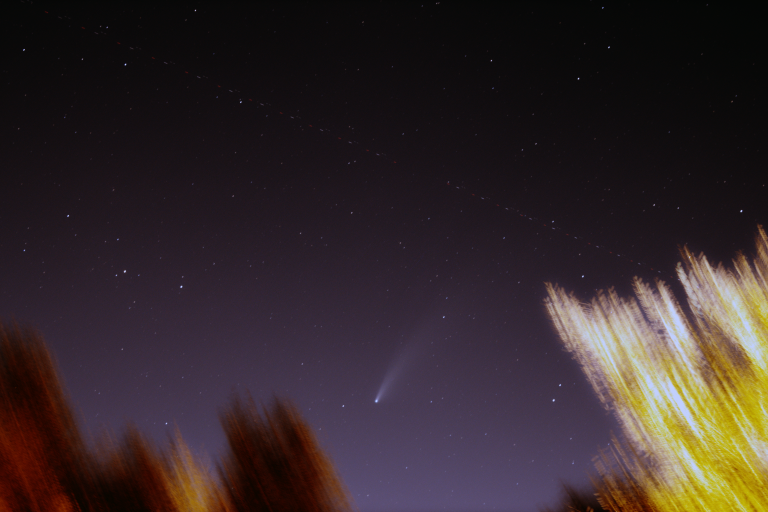
Comet hunting!
There’s a comet in the sky! They don’t appear this bright very often, so don’t miss what could be a once-in-a-lifetime chance to see a comet with your own eyes. It’s tough to spot here in suburbia with your eyes, but it’s easy to see with binoculars. Its official name is C/2020 F3 NEOWISE. Just…
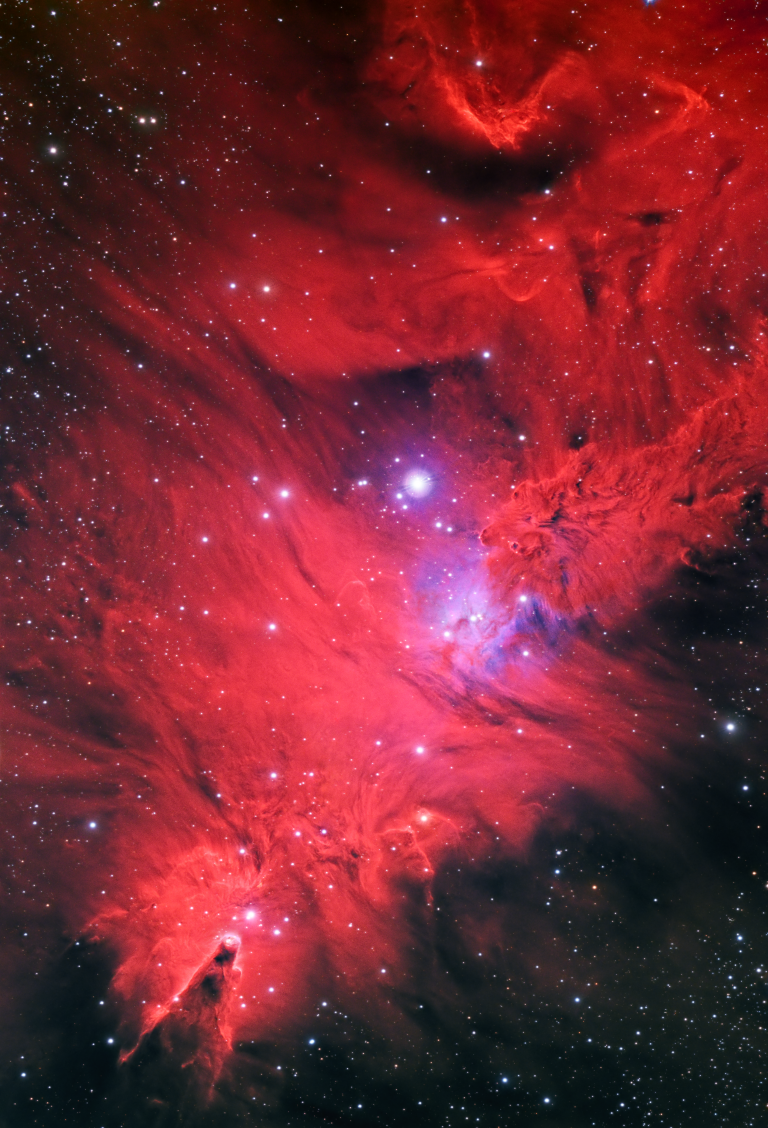
Going deep on the Cone and Fox Fur Nebulas
About 2,700 light-years away within the constellation Monoceros lies the Cone and Fox Fur Nebulas, containing the “Christmas Tree Cluster” of stars as well. I’ve imaged this many times before, but have never been happy with the results. By combining data from last year with more data collected this year however, I finally got enough…
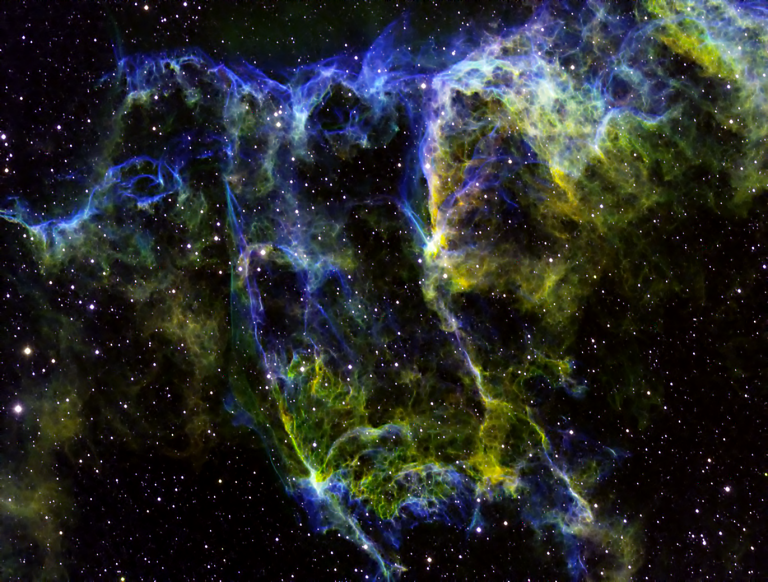
A Spooky Knot in the Veil Nebula
Taken just prior to Halloween in 2018, the southeastern knot of the Eastern Veil Nebula takes on a ghostly appearance when imaged in the Hubble palette with narrowband filters.
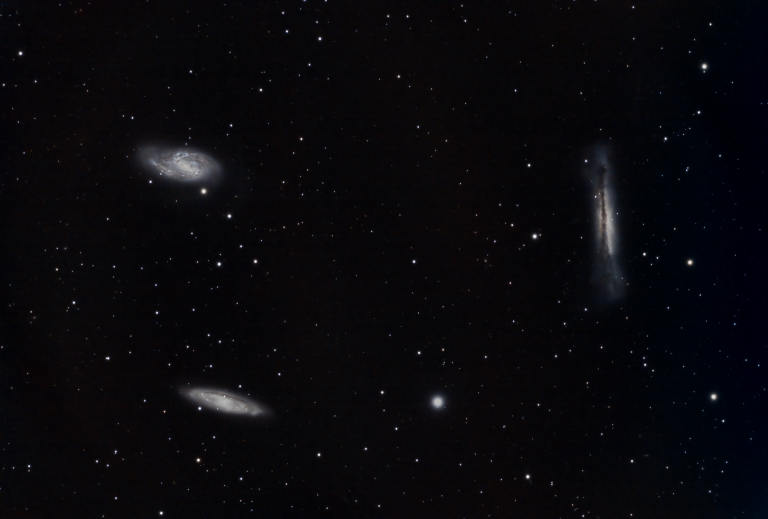
The “Leo Trio” of galaxies
Three nearby galaxies: M65, M66, and NGC 3628. All three are spiral galaxies, viewed from different angles. You can guess which one is called the “Hamburger Galaxy” 🙂
